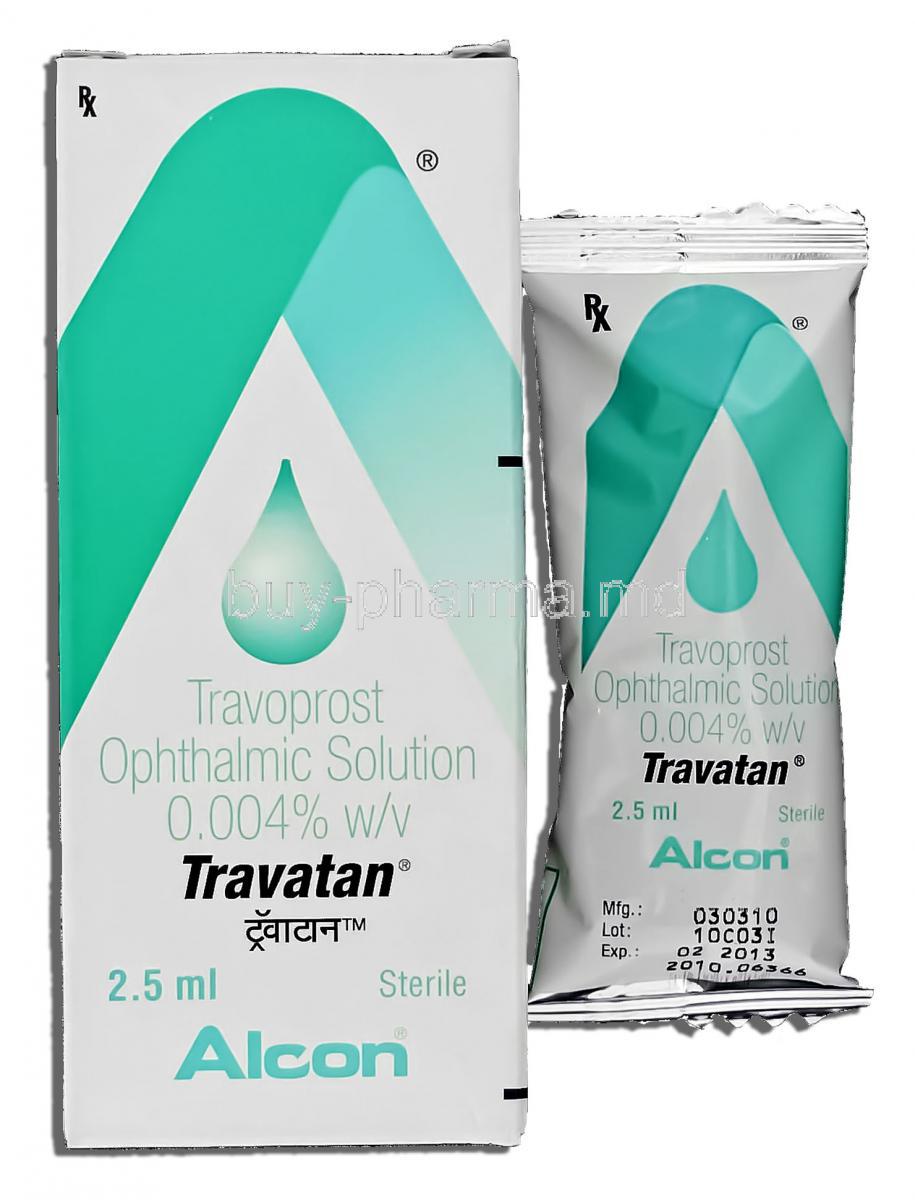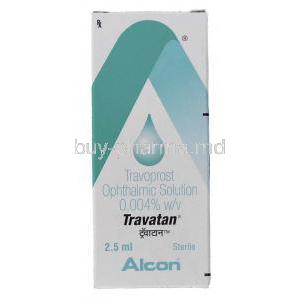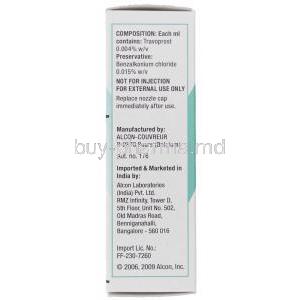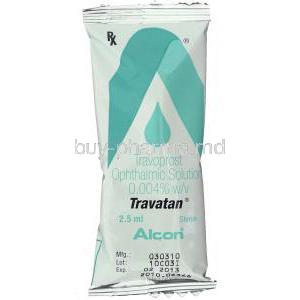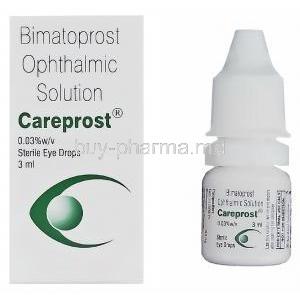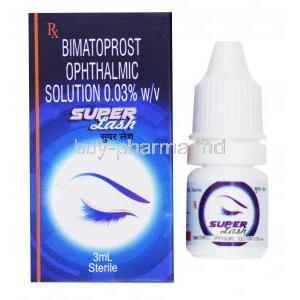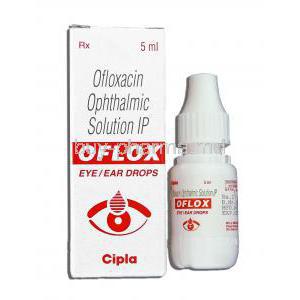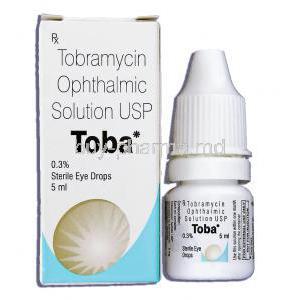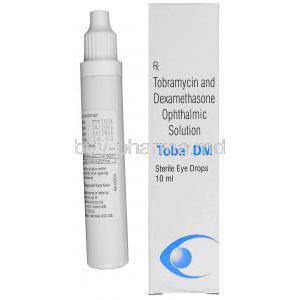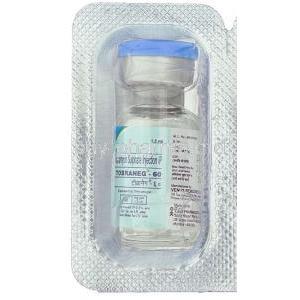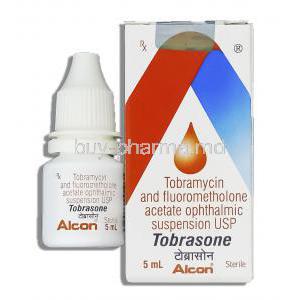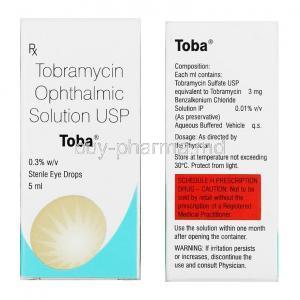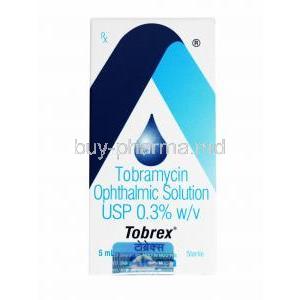Introduction to Travatan Eye Drop
Travatan Eye Drop, containing the active ingredient travoprost, belongs to the class of ophthalmic prostaglandin analogs. It is specifically designed to lower intraocular pressure (IOP), a critical factor in the progression of glaucoma and ocular hypertension. By acting on natural physiological pathways, it reduces pressure that can otherwise damage the optic nerve and impair vision.
The medication is approved by the U.S. Food and Drug Administration (FDA) and other international regulatory authorities, ensuring its safety, efficacy, and standardized quality for clinical use. Its introduction has been instrumental in advancing ophthalmic therapy, particularly for individuals at risk of irreversible vision loss due to elevated eye pressure.
Composition and Active Ingredients
The primary active compound in Travatan Eye Drop is travoprost, a synthetic prostaglandin F2α analog. This substance exerts potent ocular hypotensive effects by modifying aqueous humor dynamics within the eye.
Supporting excipients include stabilizers, isotonic agents, and in certain formulations, preservative-free options to minimize irritation in sensitive eyes. Some variants are designed without benzalkonium chloride (BAK) to accommodate patients prone to ocular surface disease.
- Available as 0.004% sterile ophthalmic solution
- Packaged in multi-dose dropper bottles for convenient use
- Innovations in formulation improve tolerability and reduce adverse reactions
Mechanism of Action: How Travoprost Works
Travoprost functions as a prostaglandin analog, selectively binding to prostaglandin F (FP) receptors in ocular tissues. This interaction stimulates physiological changes that increase the uveoscleral outflow of aqueous humor, the fluid that maintains ocular tone.
By reducing intraocular pressure, Travatan safeguards the optic nerve head from progressive degeneration. The trabecular meshwork and surrounding tissues respond by allowing enhanced fluid passage, restoring a healthier equilibrium within the eye.
Ultimately, this mechanism not only lowers pressure but also diminishes the risk of glaucomatous visual field loss.
Approved Medical Uses
- Primary Open-Angle Glaucoma: The most common form of glaucoma, characterized by gradual optic nerve damage due to elevated IOP.
- Ocular Hypertension: Persistent high eye pressure without visible nerve damage, where intervention prevents progression to glaucoma.
- High-Risk Patients: Individuals with family history, diabetes, or other ocular pathologies requiring proactive management of IOP.
By consistently lowering eye pressure, Travatan Eye Drop serves as a cornerstone therapy in ophthalmology, often forming part of long-term disease management strategies.
Off-Label Uses of Travoprost
Beyond approved uses, travoprost has been studied for additional applications:
- Cosmetic Enhancement: Off-label use includes stimulation of eyelash growth, enhancing thickness and pigmentation—similar to the effects seen with bimatoprost.
- Secondary Glaucoma Management: Investigational use in forms such as pigmentary or pseudoexfoliative glaucoma.
- Neuroprotection and Vascular Research: Ongoing studies suggest potential benefits in improving ocular blood flow and offering neuroprotective effects, though these remain under evaluation.
Dosage and Administration Guidelines
The standard dosage is one drop in the affected eye(s) once daily, preferably in the evening. Consistency in timing optimizes therapeutic effect and reduces fluctuations in intraocular pressure.
Administration should follow proper technique:
- Wash hands thoroughly before use
- Instill a single drop into the conjunctival sac, avoiding direct contact with the dropper tip
- Gently press the inner corner of the eye to reduce systemic absorption
If a dose is missed, it should be administered as soon as possible, unless it is nearly time for the next scheduled dose. Double dosing should be avoided. Contact lenses must be removed prior to instillation and may be reinserted after 15 minutes.
Side Effects of Travatan Eye Drop
Common Side Effects
- Ocular redness or conjunctival hyperemia
- Increased eyelash growth and darkening of lashes
- Mild discomfort, itching, or dryness of the eyes
These reactions are generally transient and subside with continued use or supportive measures.
Serious or Rare Side Effects
- Iris Pigmentation Changes: Gradual darkening of the iris, often permanent.
- Uveitis or Macular Edema: In susceptible individuals, particularly those with aphakia or pseudophakia with torn posterior lens capsule.
- Systemic Reactions: Rare reports include headache, dizziness, and exacerbation of respiratory conditions such as asthma.
Warnings and Important Precautions
Travatan Eye Drop must be used with caution due to potential long-term changes in ocular pigmentation and eyelid tissue. Patients should be informed about the possibility of permanent cosmetic alterations such as darkened iris or periocular skin.
Key precautions include:
- Avoiding contamination of the bottle tip to maintain sterility
- Discontinuing use if severe ocular inflammation develops
- Regular ophthalmic monitoring to track intraocular pressure and ocular health
Contraindications
- Known hypersensitivity to travoprost or any formulation components
- Patients with a history of cystoid macular edema
- Individuals with active ocular inflammation such as uveitis or iritis
Use in such cases may exacerbate underlying pathology or lead to worsening of vision-threatening conditions.
Careful Administration in Special Populations
Elderly Patients
In older adults, Travoprost remains highly effective for controlling intraocular pressure, yet its tolerability can vary due to age-related physiological changes. Elderly patients often present with comorbidities, requiring careful consideration of therapy selection and monitoring.
Key considerations include:
- Evaluating ocular response, as aging eyes may exhibit altered pharmacodynamics.
- Regular monitoring for local irritation or pigmentation changes, which may appear more prominent with thinner periocular skin.
- Reviewing concomitant medications, as polypharmacy increases the likelihood of interactions or compounding ocular effects.
Pregnant Women and Nursing Mothers
Travoprost, as a prostaglandin analog, carries potential concerns during pregnancy. Prostaglandins can influence uterine contractility, raising theoretical risks of miscarriage or premature labor. Consequently, its use during pregnancy is generally reserved for situations where the benefits outweigh potential harm.
During lactation, caution is also advised:
- Animal studies indicate excretion of prostaglandin analogs in breast milk.
- The impact on nursing infants remains uncertain, so alternative therapies may be considered where feasible.
- If therapy is essential, timing the instillation immediately after feeding may minimize systemic exposure in infants.
Pediatric and Adolescent Patients
Safety and efficacy data in children are more limited compared to adults. Travoprost is not routinely recommended for very young children, except in carefully controlled clinical settings.
- Approved indications focus on specific cases of pediatric glaucoma where conventional treatments are inadequate.
- Long-term safety data in adolescents suggest tolerability, but vigilant monitoring is necessary for side effects such as iris pigmentation or eyelash changes.
- Careful dose adjustments and close follow-up with a pediatric ophthalmologist are essential.
Drug Interactions
Travoprost can interact with other ophthalmic and systemic therapies. Such interactions may alter efficacy or increase the risk of adverse effects.
- Other Prostaglandin Analogs: Concomitant use may paradoxically reduce efficacy or enhance side effects. Monotherapy with one prostaglandin analog is generally advised.
- Beta-Blockers: Combined use with topical beta-blockers may provide additive pressure-lowering effects but requires careful monitoring for systemic absorption.
- Carbonic Anhydrase Inhibitors: May enhance ocular hypotensive outcomes; however, additive side effects such as ocular irritation should be anticipated.
- Systemic Medications: Agents influencing vascular tone or ocular blood flow may compound Travoprost’s effects, warranting closer observation.
Overdosage and Emergency Management
Excessive instillation of Travoprost is unlikely to cause severe ocular harm but may lead to increased irritation or redness.
- Ocular Over-Application: Symptoms include burning, stinging, conjunctival hyperemia, and watery eyes.
- Oral Ingestion: Accidental swallowing, though rare, can result in systemic prostaglandin effects such as nausea, abdominal pain, dizziness, or bronchospasm in sensitive individuals.
Emergency management strategies involve:
- Immediate rinsing of the eye with clean water or saline in case of accidental over-application.
- Supportive care and monitoring of vital signs if significant oral ingestion occurs.
- Prompt medical consultation for children or vulnerable adults exposed to accidental ingestion.
Storage and Handling Precautions
To preserve potency and safety, Travoprost must be stored correctly. Deviation from recommended conditions can reduce efficacy or increase the risk of contamination.
- Storage Conditions: Keep at controlled room temperature, away from direct light and heat. Do not freeze.
- Shelf Life: Check the expiration date before use. Once opened, the bottle should typically be discarded after 4 weeks to avoid microbial contamination.
- Safe Handling: Always avoid contact between the dropper tip and the eye, skin, or any surface.
- Disposal: Discard unused or expired eye drops responsibly. Do not pour into drains; follow local guidelines for pharmaceutical waste.
Adhering to these measures ensures both therapeutic reliability and patient safety.

